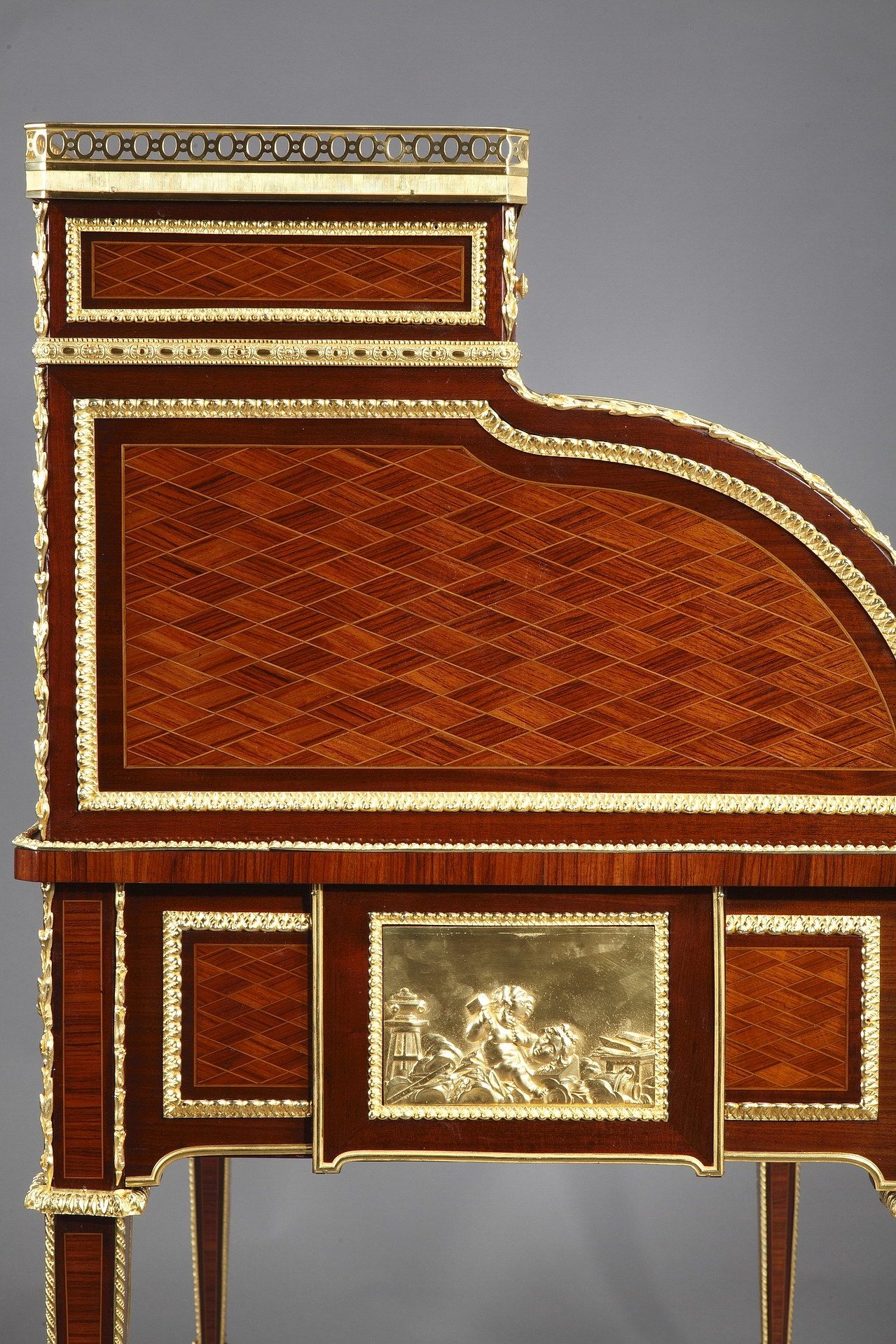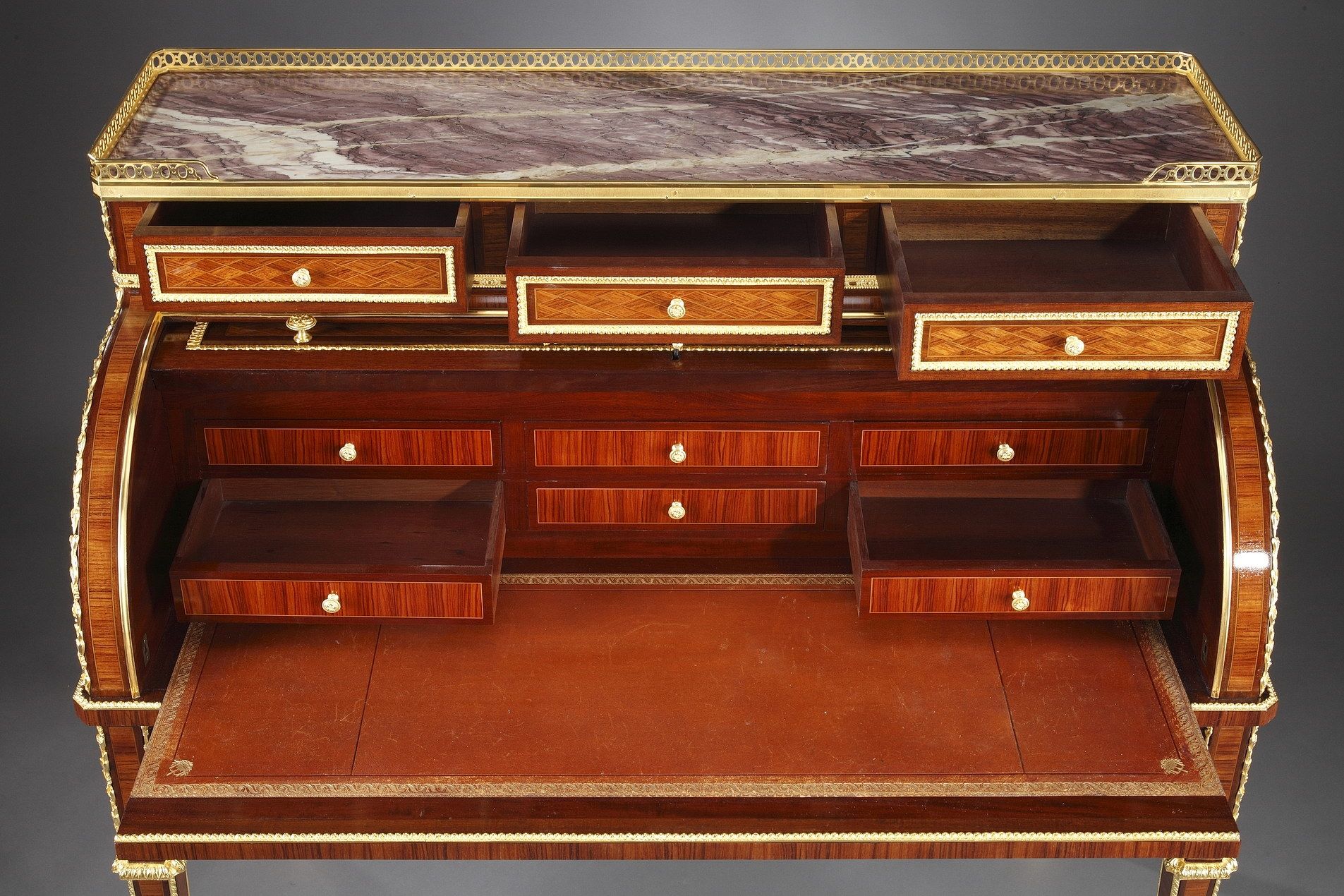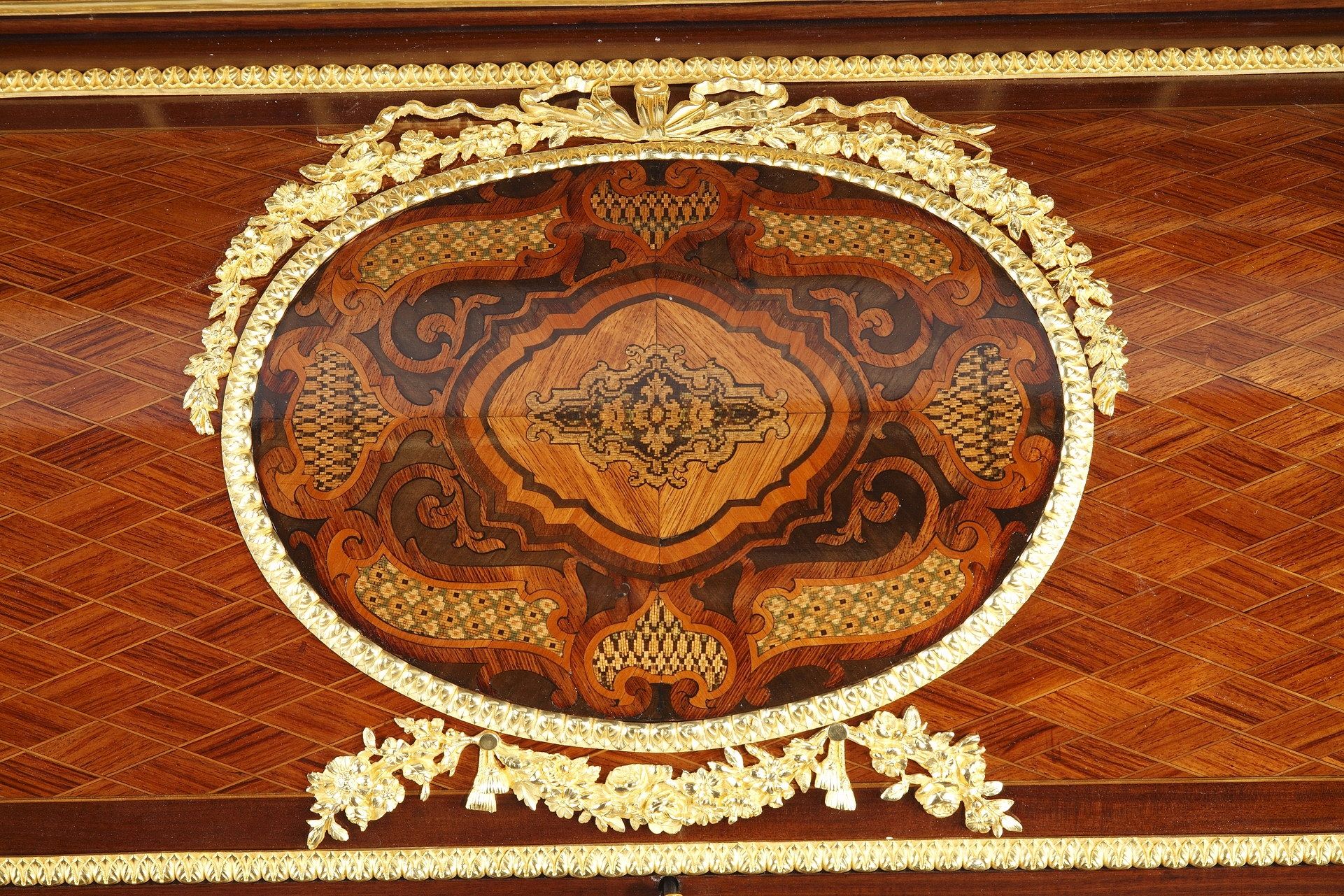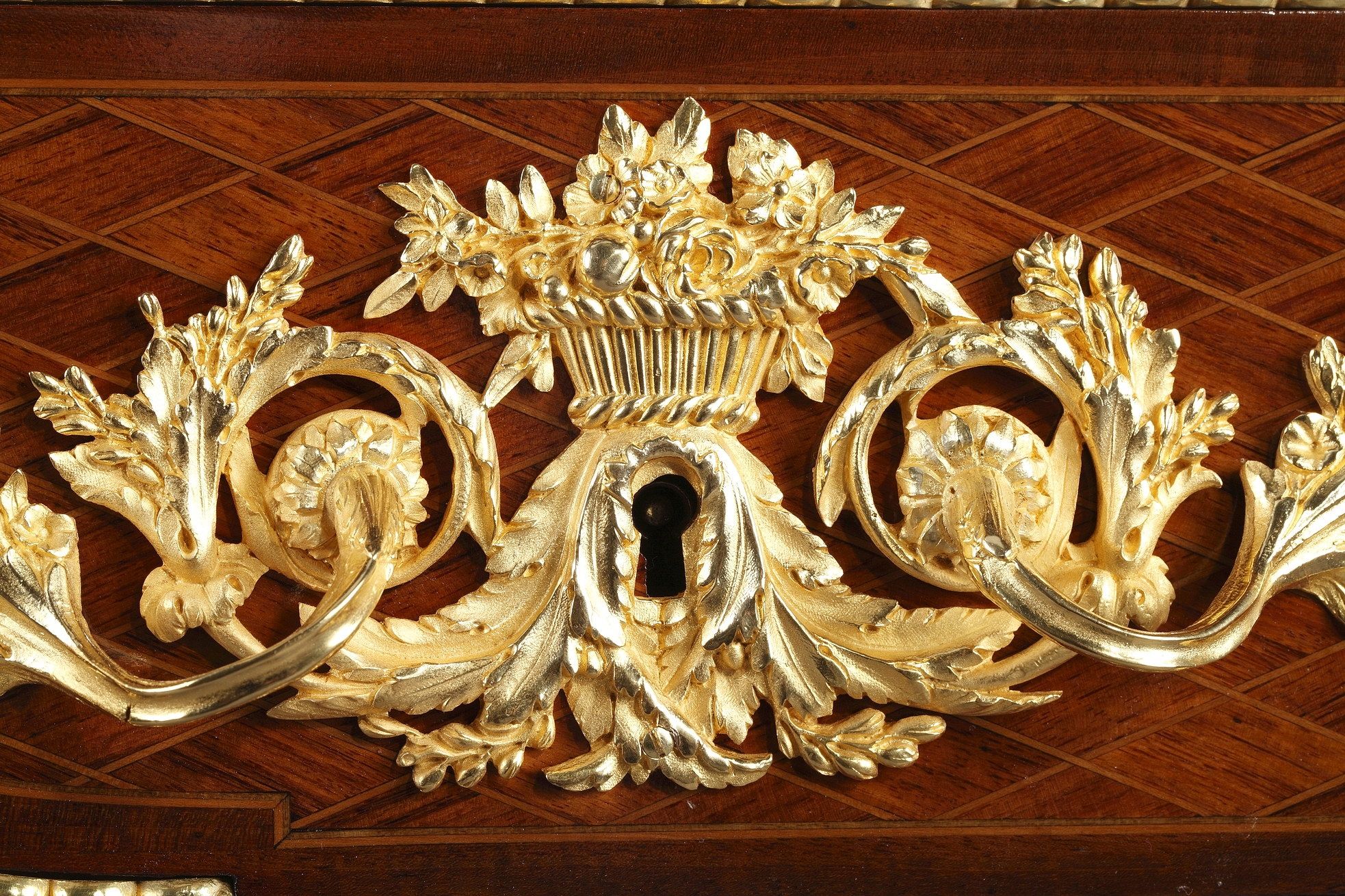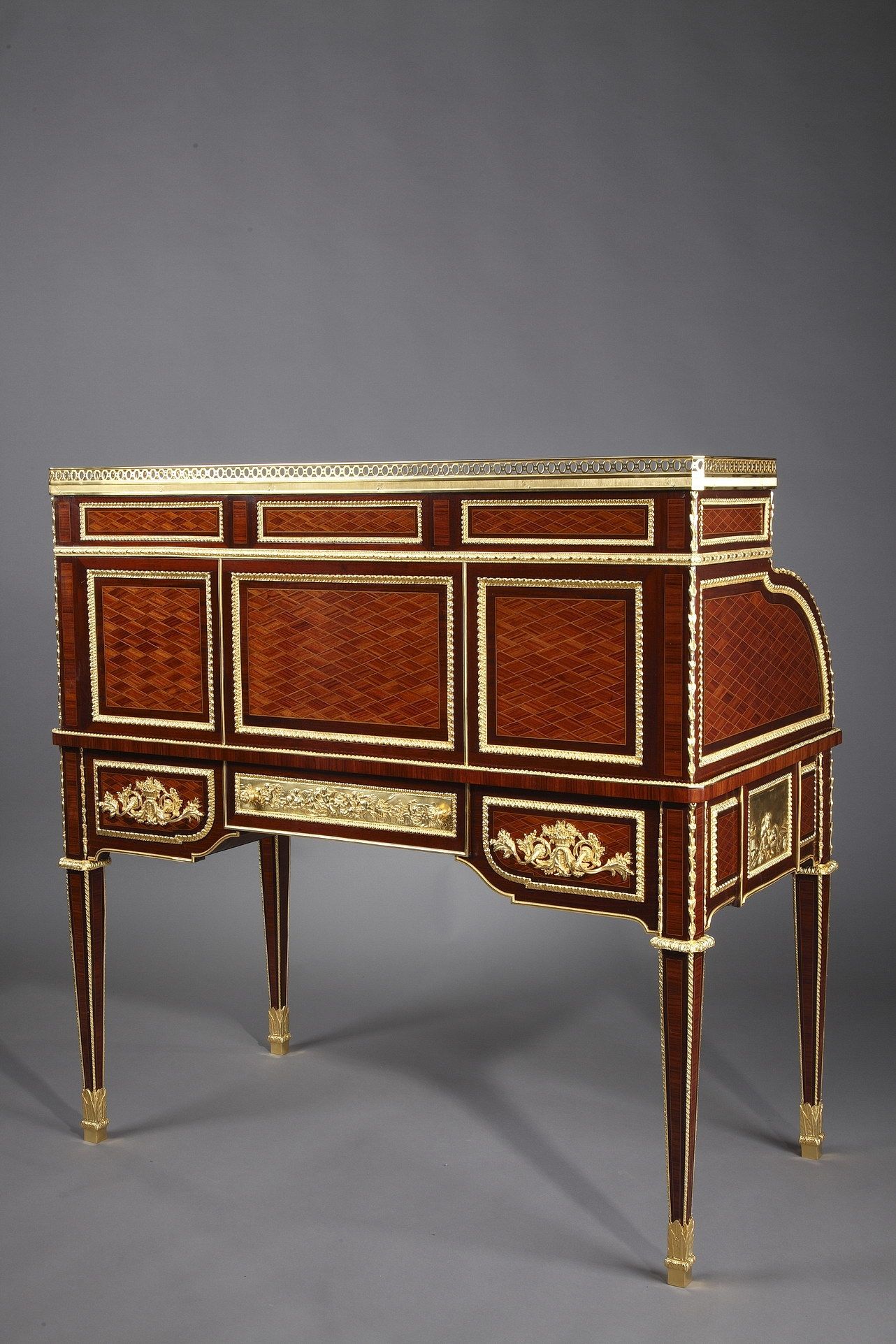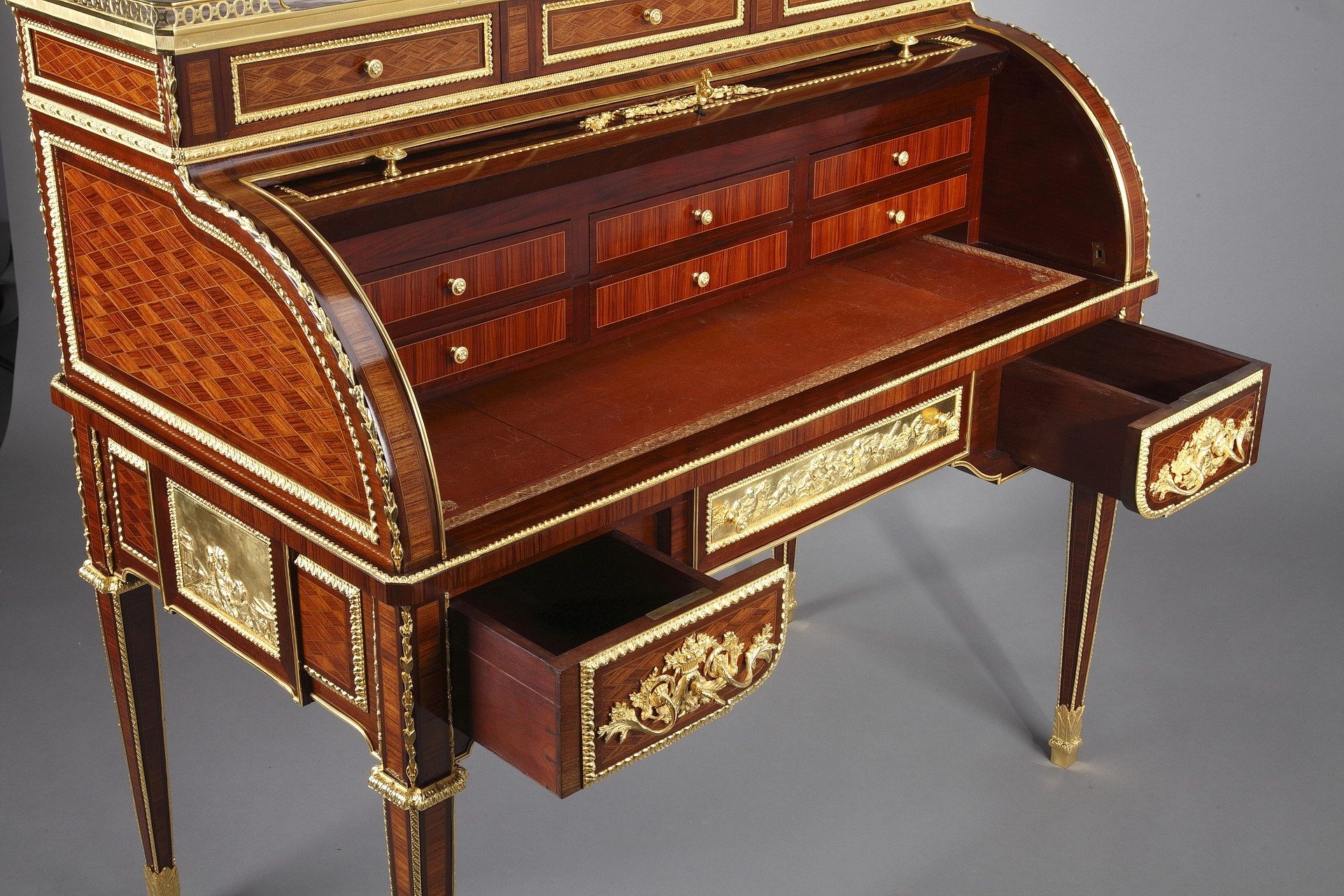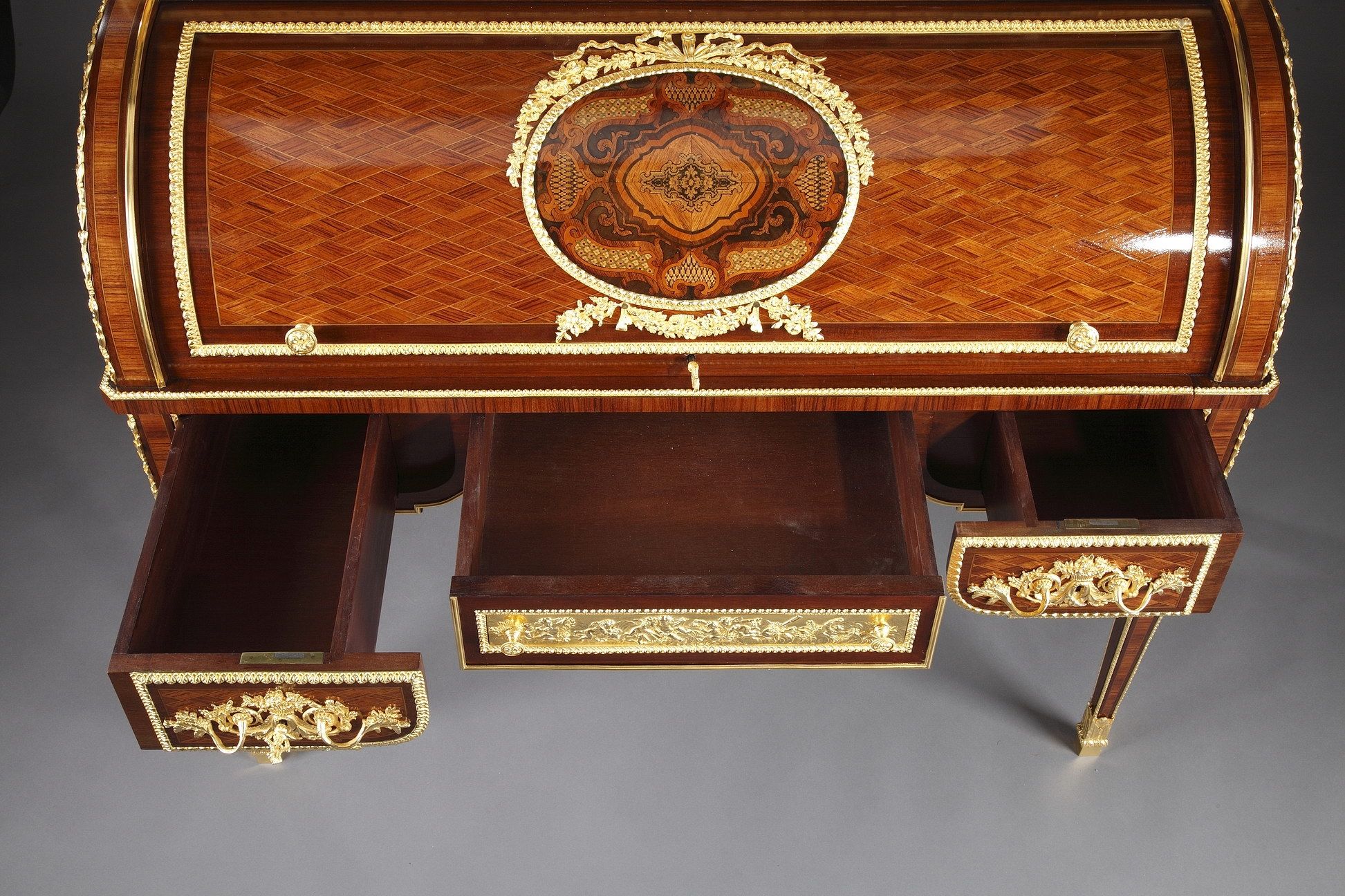Cylinder desk after Riesener
10.12.20
The cylinder writing desk: an 18th century invention
The writing desk is a piece of furniture used as an office, created in the middle of the 18th century, under the reign of Louis XV. It has drawers and compartments, and sometimes hiding places for secret documents. It was first known as the "secrétaire en armoire". The lower body, as an extension, is closed by two doors over drawers or a shelf dividing the space in two. The writing desk is made of natural wood, veneer, marquetry, and decorated with numerous attributes. Created after the chest of drawers, it is one of the most produced pieces of furniture, and quickly undergoes practical modifications.
The secretary orcylinder desk is a new type of writing desk, created around 1760 by Jean-François Oeben (1721-1763), cabinetmaker to Louis XV and pupil of Charles-Joseph Boulle, who became famous for making mechanical furniture. The cylinder desk is closed by a quarter-cylinder shaped cover with flexible slats, which covers compartments and drawers. The opening movement of the cylinder can move a leather-covered shelf forward, thus increasing the working surface.
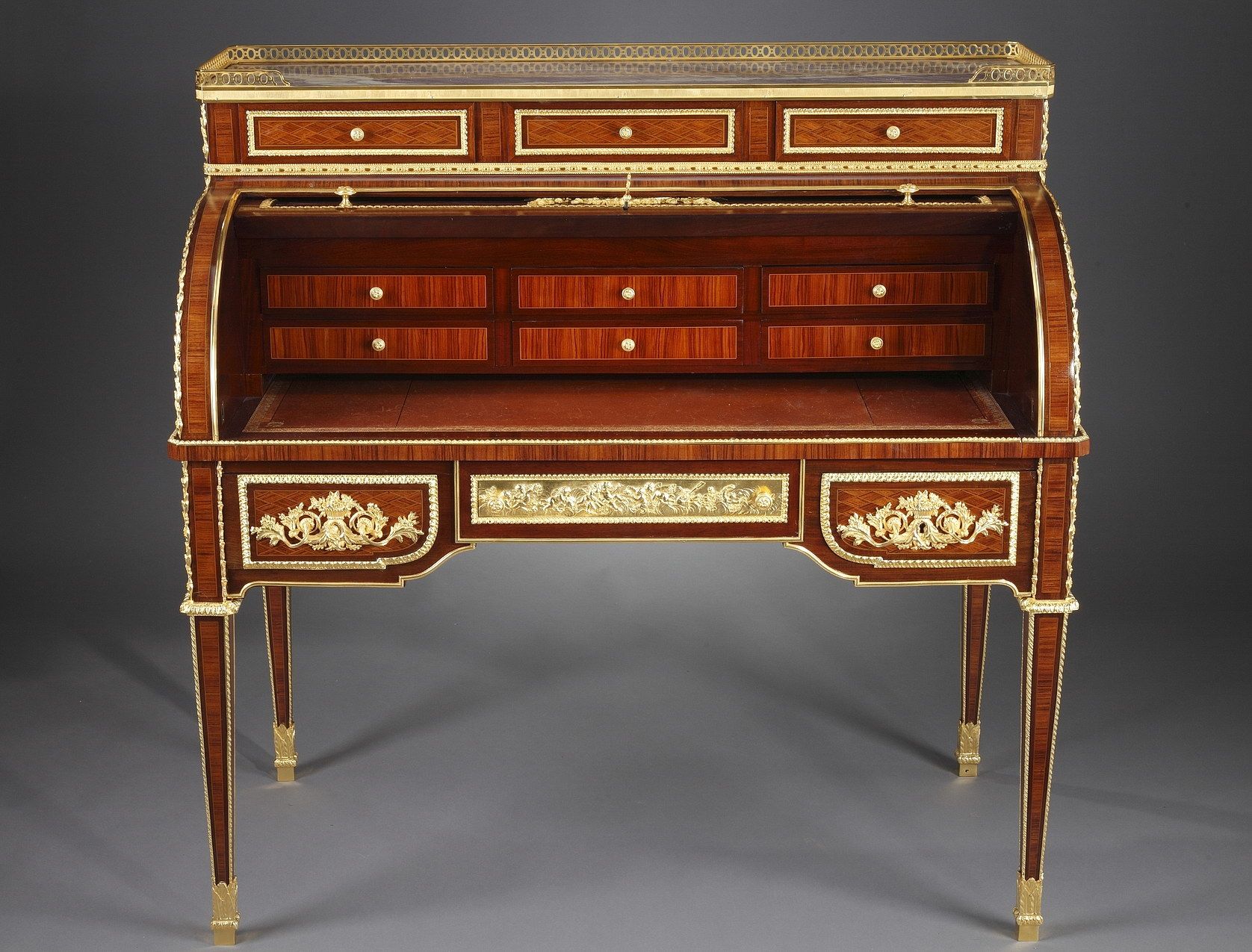 Cylinder desk after a model by Riesener
Cylinder desk after a model by Riesener
The best-known example of this type of furniture is the famous monumental bureau à cylindre for King Louis XV, preserved at the Château de Versailles, for which he began production in 1760 with the construction of the frame, the design of the secret mechanisms and the plastering of the bronzes. The piece, completed by his successor Riesener, was delivered in 1769.
Jean-Henri Riesener, the Crown's cabinetmaker
Riesener obtained his master's degree in 1768 and executed over 700 pieces of furniture for the Court. In 1769, he signed and delivered the cylinder desk originally designed by Oeben, whose assistant he had been. He created prestigious pieces for the King and Queen, as well as numerous pieces of furniture with secret spaces that could be discovered by operating mechanisms. As Oeben's apprentice, he learned to make furniture with complex mechanisms, as well as marquetry work.
Riesener produced several cylinder desks. Among the best-known is that of Thierry de Ville in 1784, which reproduces the mechanism of the King's desk and the forms of the Louis XV style. He also created secretaries with much more neoclassical forms, reflecting the evolution towards the Louis XVI style, such as Marie-Antoinette's cylinder desk at the Tuileries, which inspired our desk.
Riesener, the cylinder desk for Marie-Antoinette
In 1784, Marie-Antoinette fitted out a small apartment in the Tuileries, for which Jean-Henri Riesener delivered several pieces of furniture, including a chest of drawers, a night table and a dressing table for the bedroom, as well as the cylinder desk for the inner cabinet, which is now kept in the Louvre Museum.
This piece of furniture made of amaranth, sycamore and rosewood veneer, consists of a desk with three drawers and an upper cylinder. The panels of the desk are decorated with a diamond grid in marquetry. In the centre of the cylinder, a garland of flowers, laurel branches and ribbons in bronze frames a trophy in marquetry illustrating the attributes of poetry. This exceptional decoration is completed by numerous gilded bronzes including four bas-reliefs representing three allegories of the arts: Music, Painting and Sculpture.
Galerie Atena's cylinder desk, a replica of Riesener's secrétaire
Galerie Atena's secretary is based on the body of Riesener's desk, with its three drawers, allegorical bas-relief decoration and tapered legs. The upper cylinder body is slightly modified. The middle of the cylinder is inlaid with an abstract decorative motif and the upper part, below the gallery, features three additional drawers. The interior features six small drawers and no additional storage space. This model - an interpretation of Riesener's famous secrétaire à cylindre, is attributed to the Maison Beurdeley
The Beurdeleys: a successful dynasty
The Beurdeley familywas one of the most important dynasties of furniture makers in the 19th century, operating for three generations from 1818 to 1895. They became famous for the quality of their gilded bronzes and the choice of precious materials for the manufacture and decoration of their furniture and pieces of art. During the Second Empire, Louis-Auguste-Alfred Beurdeley was one of the main suppliers to the Imperial Furniture Guard and supplied the royal houses of Europe. He also received orders from Napoleon III and Empress Eugenie, as well as numerous awards at the Universal Exhibitions.
Alfred-Emmanuel-Louis Beurdeley succeeded his father in 1875 and specialised in the manufacture of luxury furniture copied from the antique furniture of the Mobilier National. He made many replicas of well-known models, including probably the Riesener desk for Marie-Antoinette. He continued this successful activity until 1895, when Beurdeley closed its doors. His stock of over three thousand nine hundred pieces of furniture and art object was then dispersed at five auctions.


